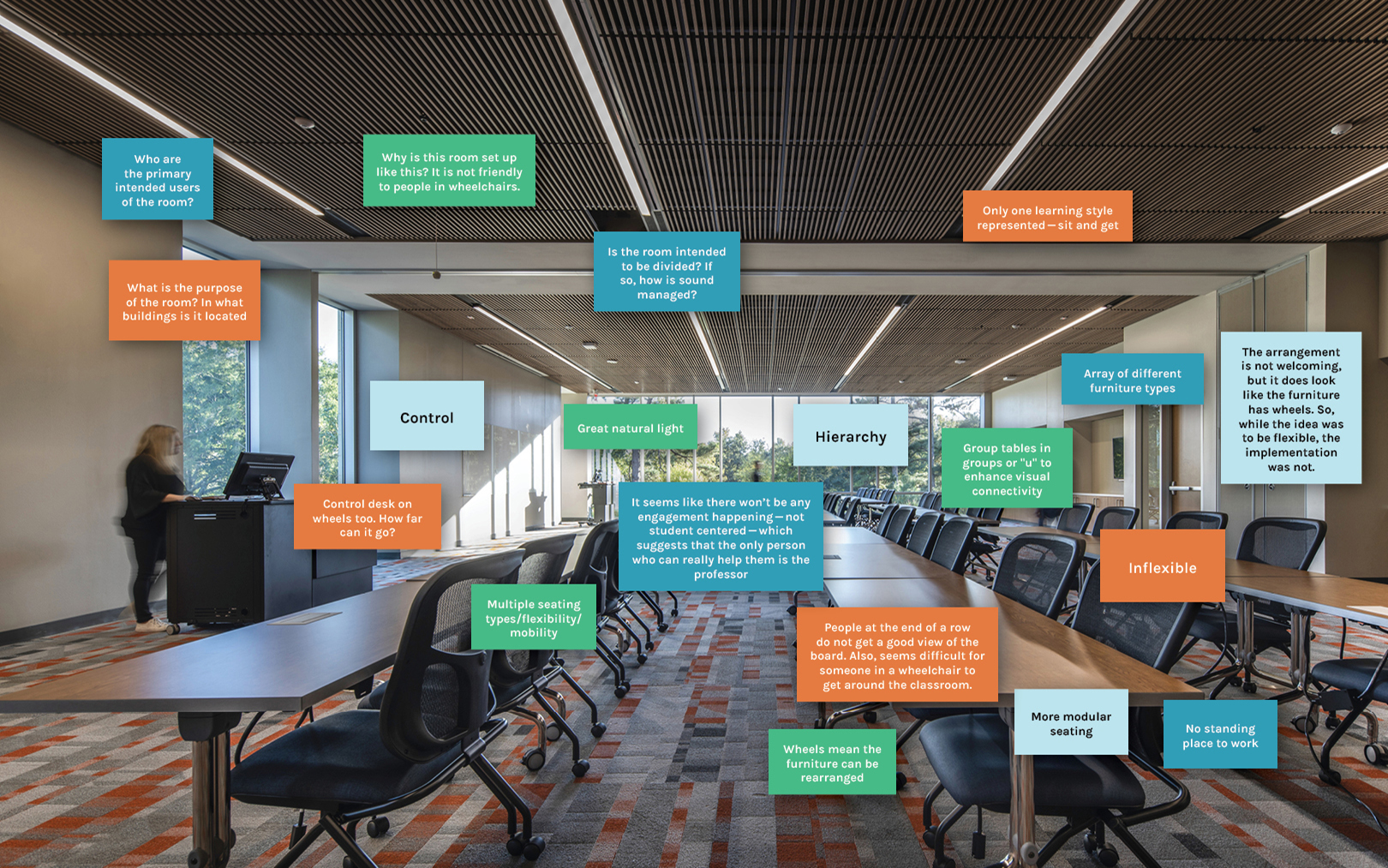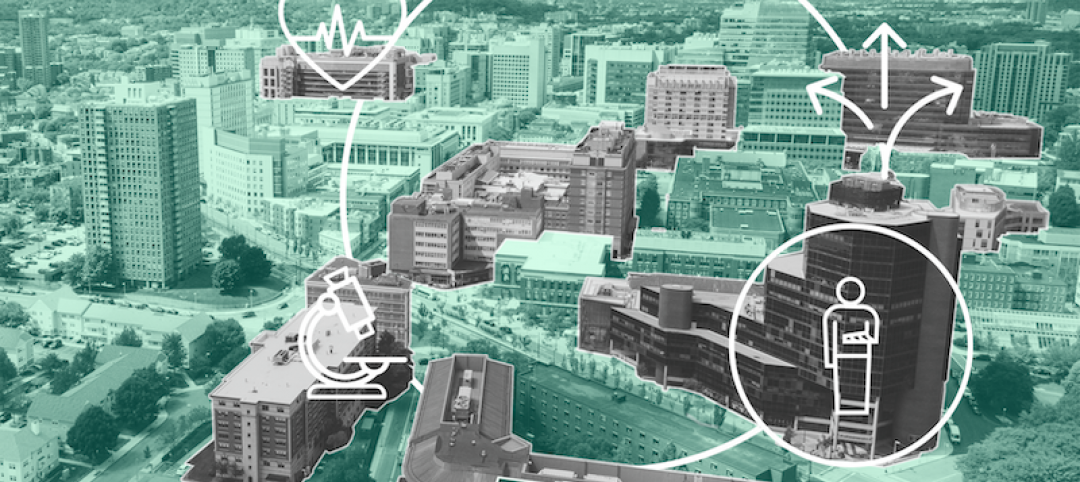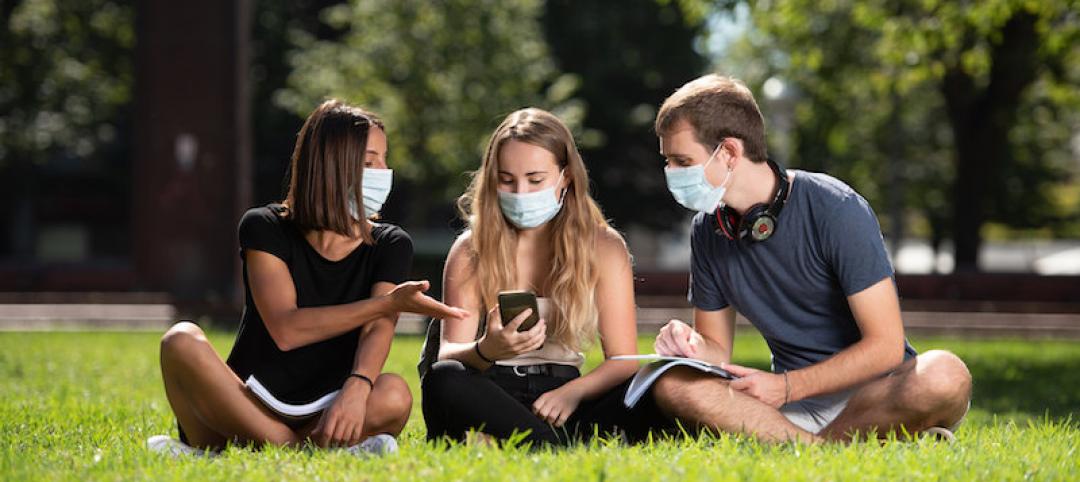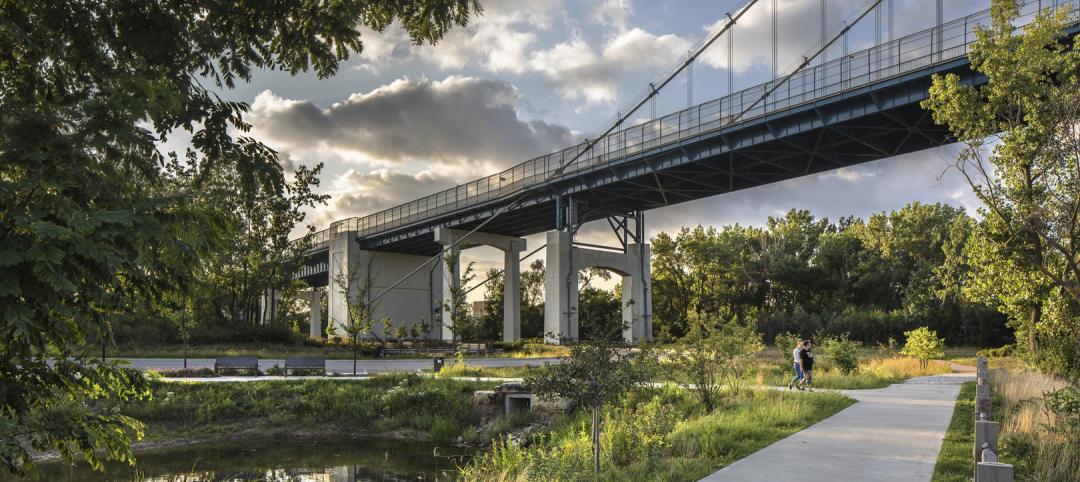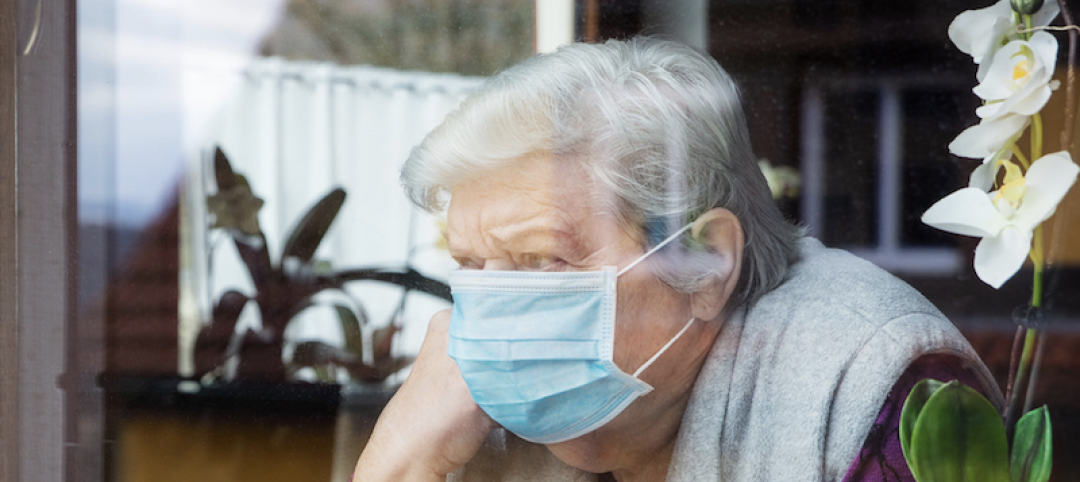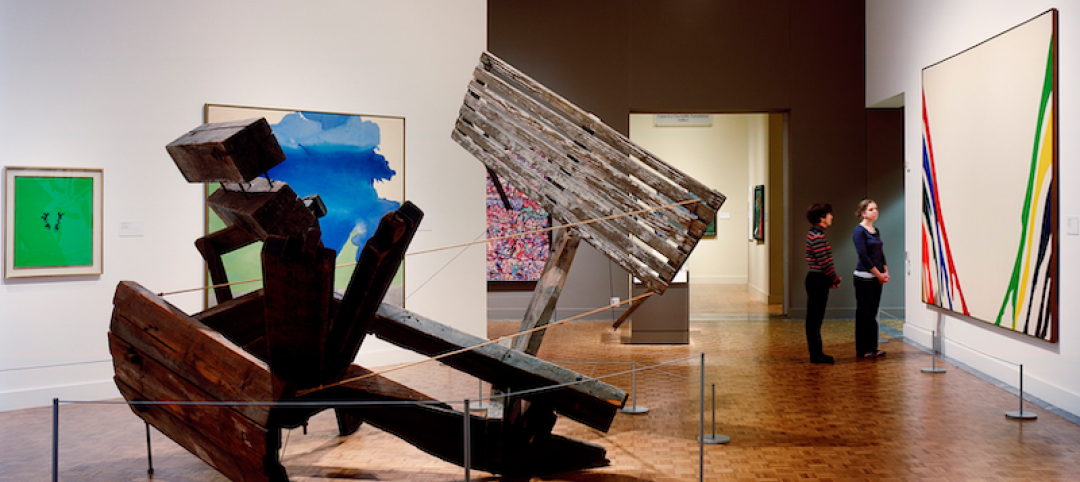It’s a simple premise: we all perceive space differently. The widely held belief that the built environment is fundamentally abstract—a neutral composition of form and material—doesn’t hold up to scrutiny. Early critiques of this idea emphasized physical accessibility, noting that mobility-challenged individuals perceive inaccessible environments as barriers to full social and personal development. In other words, tangible obstacles aroused intangible perceptions of exclusion and repression.
Similar contemporary research demonstrates that the full range of our experience—physical, social, and cultural—impacts our “reading” of the space around us. As architects and planners, it’s essential that we acknowledge this and strive to create genuinely inclusive settings.
Inclusive design workshop exercises
I recently had the opportunity to explore this issue through our SXSW EDU “Inclusive Campus Design Workshop.” With guidance from social justice educator, community organizer, and participatory action researcher Amara Perez, PhD, and student researcher Christina Avila, we led participants through an exercise to read the social messaging encoded in our campus buildings and landscapes. The imagery used ranged in complexity—from restroom signage that reinforced binary gender definition to classrooms that contributors perceived as “hierarchical” and “replicating power structures.”
Amara detailed how the engagement of historically marginalized students, faculty, and staff generates counter-narratives, or alternatives, to dominant white male narratives. In turn these counter-narratives can inform and expand inclusion in the design and materialization of our campuses.
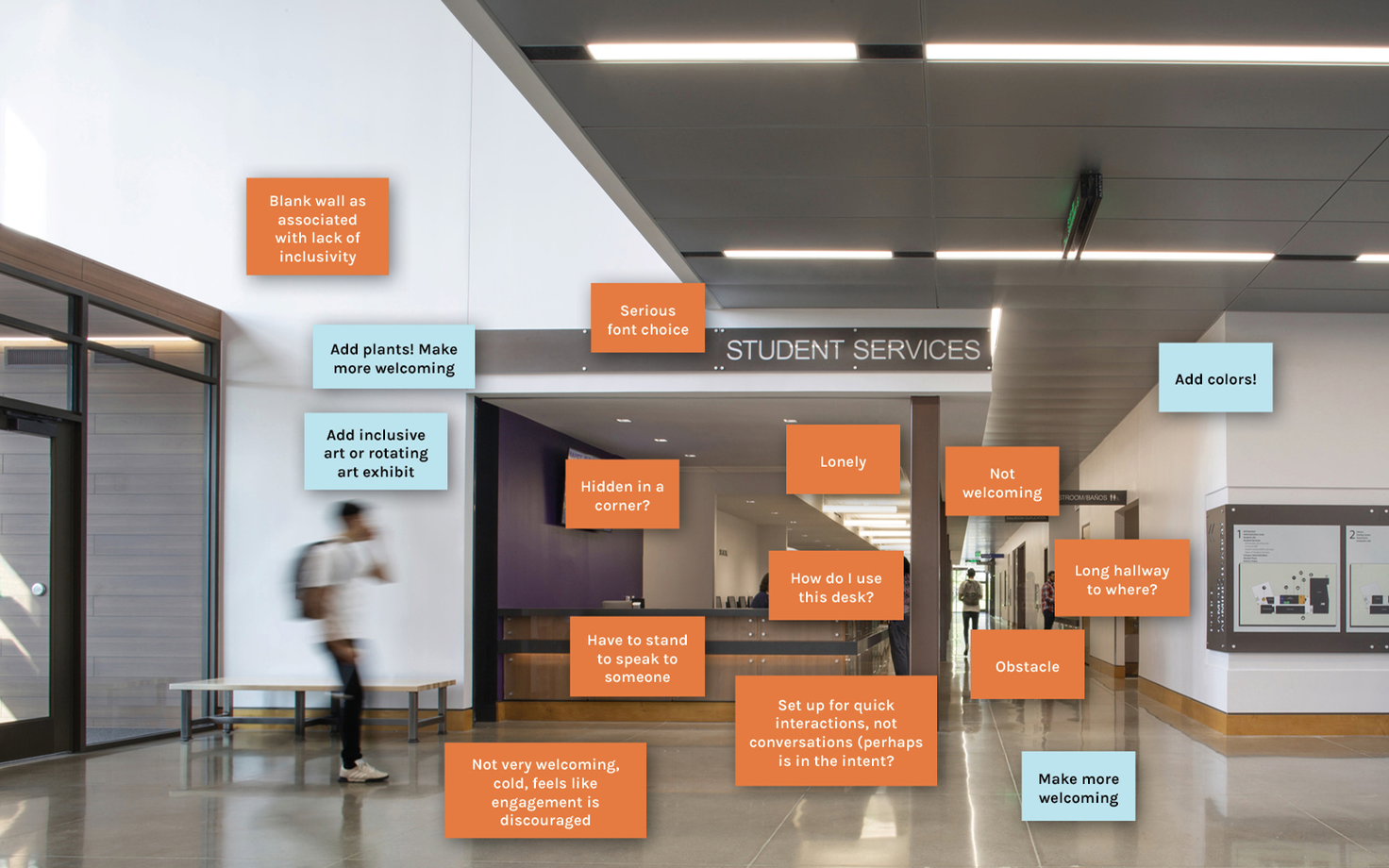
As we prepared for the workshop, I was drawn to the idea of sharing design power and authority with those not typically involved in the process of creating buildings and landscapes. I’m convinced this is necessary to advance justice, equity, and inclusion—as well as the future of the design professions, which are always at risk of becoming instruments of the powerful. I’m looking forward to a new phase in my career where we prioritize diversity in stakeholder engagement and a broader definition of design excellence. This won’t happen automatically.
As design professionals we must:
- Guarantee the participation of historically marginalized communities through participatory design processes.
- Engage these stakeholders on their terms, in settings where they feel secure and authoritative.
- Use a broad range of engagement strategies and techniques to elicit meaningful range of perspectives.
- Respect the “test and assess” phase of design thinking by seeking and taking action on feedback gathered from these stakeholders; bring the “design crit” to them.
- Expand the pool of marginalized planners and designers and empower these voices to connect across cultures.
- Design not for ourselves—or some imagined neutral user— but for the rich diversity at the heart the American experience and culture.
We have begun to act on these principles in several of our projects, including a health sciences education project in Canada where we are engaging First Nations stakeholders in the design of their clinical environments. This allowed stakeholders to share the traumas of forced assimilation and express distrust of institutional authority. As a counter-narrative, participants shared cultural signals that would make these clinics more welcoming, including solar orientation, materiality—using stone to express both persistence and healing—and the use of First Nations motifs, like the star blanket. Our team looks forward to sharing more progress as we grow into these aspirations for inclusive design.
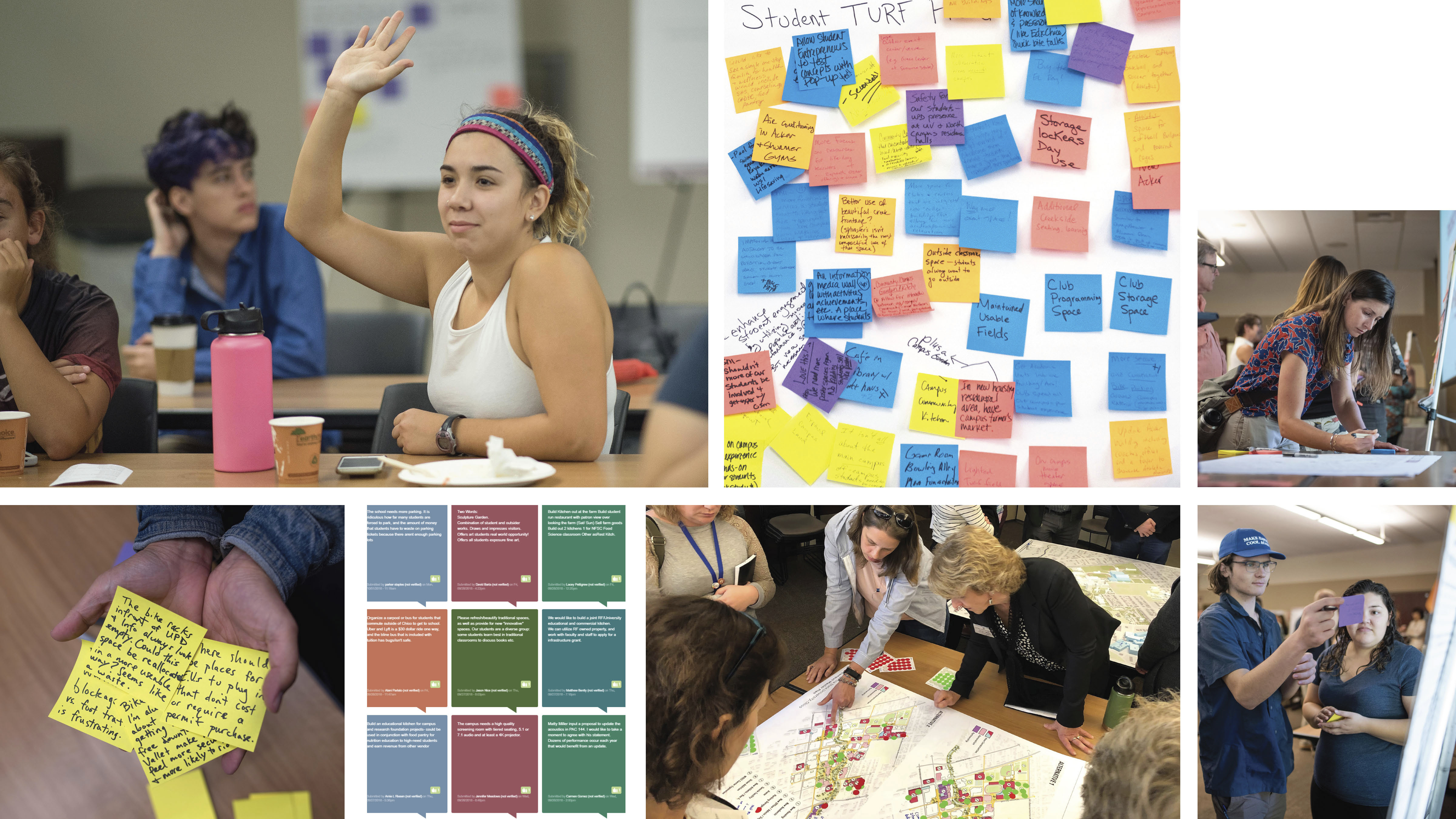
More from Author
SmithGroup | Oct 28, 2024
A case for mid-rise: How multifamily housing can reshape our cities
Often referred to as “five-over-ones,” the mid-rise apartment type is typically comprised of five stories of apartments on top of a concrete “podium” of ground-floor retail. The main criticism of the “five-over-one” is that they are often too predictable.
SmithGroup | Feb 27, 2023
Surfing the Metaversity: The future of online learning?
SmithGroup's tour of the Metaversity gives us insight on bringing together physical and virtual campuses to create a cohesive institution.
SmithGroup | Nov 28, 2022
Data centers are a hot market—don't waste the heat!
SmithGroup's Brian Rener shares a few ways to integrate data centers in mixed-use sites, utilizing waste heat to optimize the energy demands of the buildings.
SmithGroup | Aug 3, 2022
Designing learning environments to support the future of equitable health care
While the shortage of rural health care practitioners was a concern before the COVID-19 pandemic, the public health crisis has highlighted the importance of health equity in the United States and the desperate need for practitioners help meet the needs of patients in vulnerable rural communities.
SmithGroup | Aug 10, 2021
Retail reset: The future of shopping malls
Developers and design partners are coming together to reimagine how malls can create a new generation of mixed-use opportunities.
SmithGroup | May 17, 2021
Future pandemic preparedness at the medical district scale
The current COVID-19 pandemic highlights the concern that we will see more emergency events in the coming years.
SmithGroup | Jan 25, 2021
Amid pandemic, college students value on-campus experience
All the students we interviewed were glad that they returned to campus in one form or another.
SmithGroup | Aug 13, 2020
Renewing the healing role of public parks
While we can’t accurately predict all the ways we will respond to the current COVID-19 pandemic, it should provide a moment of reflection as we see all too clearly the consequences of our exploitation and destruction of nature.
SmithGroup | Jul 21, 2020
How design of senior living communities must change after COVID-19
The cost of maintaining high quality of care and high quality of life for senior living communities has increased up to 73% for senior living communities that remain free of COVID-19 and up to 103% for COVID-19 positive senior living communities.
SmithGroup | Jun 12, 2020
How will museums change after COVID-19
This new environment may herald innovative economic models and change the way we think about museum design.

